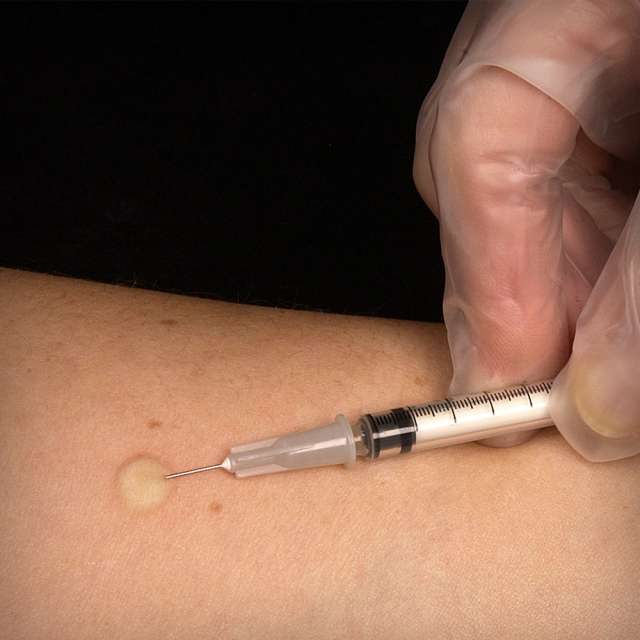How do you read a TB skin test?
 The purified protein derivative test confirms whether someone has had exposure to tuberculosis, a serious infectious disease. A positive test result indicates that the person may have a tuberculosis infection, but it does not necessarily mean that they have active tuberculosis.
The purified protein derivative test confirms whether someone has had exposure to tuberculosis, a serious infectious disease. A positive test result indicates that the person may have a tuberculosis infection, but it does not necessarily mean that they have active tuberculosis.
Tuberculosis, or TB, is a bacterial infection that can affect any part of the body but most commonly affects the lungs. There are two types of TB infection:
- Latent infection: In the latent form of the disease, the bacteria are dormant, which means that they are not active. Someone with this condition does not feel unwell or have any symptoms. A latent infection cannot spread to other people.
- Active infection: Someone with an active infection has TB. The amount of time that it takes to progress from the latent infection to active disease varies. The symptoms of active TB depend on which part of the body it affects, but they can include unexplained weight loss, fatigue, loss of appetite, fever, and night sweats.
To carry out a purified protein derivate (PPD) test, a healthcare professional will put a small amount of the protein that occurs in the TB-causing bacteria under the person's skin. If they have had exposure to the disease, the protein will react with the immune system, and a red bump will appear at the injection site within a few days.
What to expect
A PPD test is quick and relatively painless.
A nurse or another healthcare professional will first administer an injection with the TB protein. They will use a tiny needle to place the liquid directly under the skin so that a small blister forms. The injection may cause a little discomfort, but the liquid should not burn or feel uncomfortable.
Sometimes, the person administering the injection will mark the site by circling the area with a pen. They do this to make the test results easier to read. The injection site does not require a dressing, and the skin should not have any creams or lotions on it.
It is also important to avoid itching or rubbing the injection site. If it becomes uncomfortable, a cold compress can provide relief.
Once back at home, people can resume their normal life and hobbies, including showering, swimming, and other physical activities.
A healthcare professional will need to determine the results within 2–3 days of the test. They will check the injection site for any signs of an immune reaction.
If a person receives the injection but does not return for their results within the specific timeframe, they will need to have the test again.
It is unlikely that someone having this test will experience any side effects, although swelling, blistering, or ulcers are possible at the injection site. If any of these side effects occur, they should resolve within a few weeks with no long-term scarring or complications.
Results
A healthcare professional will measure the induration, which is the raised, swollen, red area. A small area of induration denotes a negative result. Such an area will usually be 5–15 millimeters in diameter, depending on the person's risk of potential exposure to TB. A larger area of induration signifies a positive result.
It is important to realize that a positive PPD test result does not mean that someone has TB. However, the individual will require further testing to determine whether they have a latent or active infection.
It is also possible to have a false positive or false negative reaction to the test. There are many reasons why this could happen. A false negative can occur if:
- Exposure to the infection is very recent.
- The infection is from a very long time ago.
- Someone has had a recent vaccination using a live virus.
- The healthcare professional performed the test incorrectly.
A false positive can occur if:
- The healthcare professional either carried out the test incorrectly or misread the results.
- Someone has an infection with a different strain of the bacteria.
- Someone has had treatment with a BCG vaccine, which is a standard treatment for early bladder cancer.
- A doctor will help interpret the test results and provide guidance on the next steps.
Takeaway
The PPD skin test is a simple test that can help screen for tuberculosis, a severe infectious disease.
By injecting a small sample of the tuberculosis protein under the top layer of the skin, healthcare professionals can determine whether someone has had exposure to the bacteria that cause the disease.
People should speak with their doctor regarding any concerns that they have about their risk for TB or their test results.
source: https://www.medicalnewstoday.com/articles/324325.php









